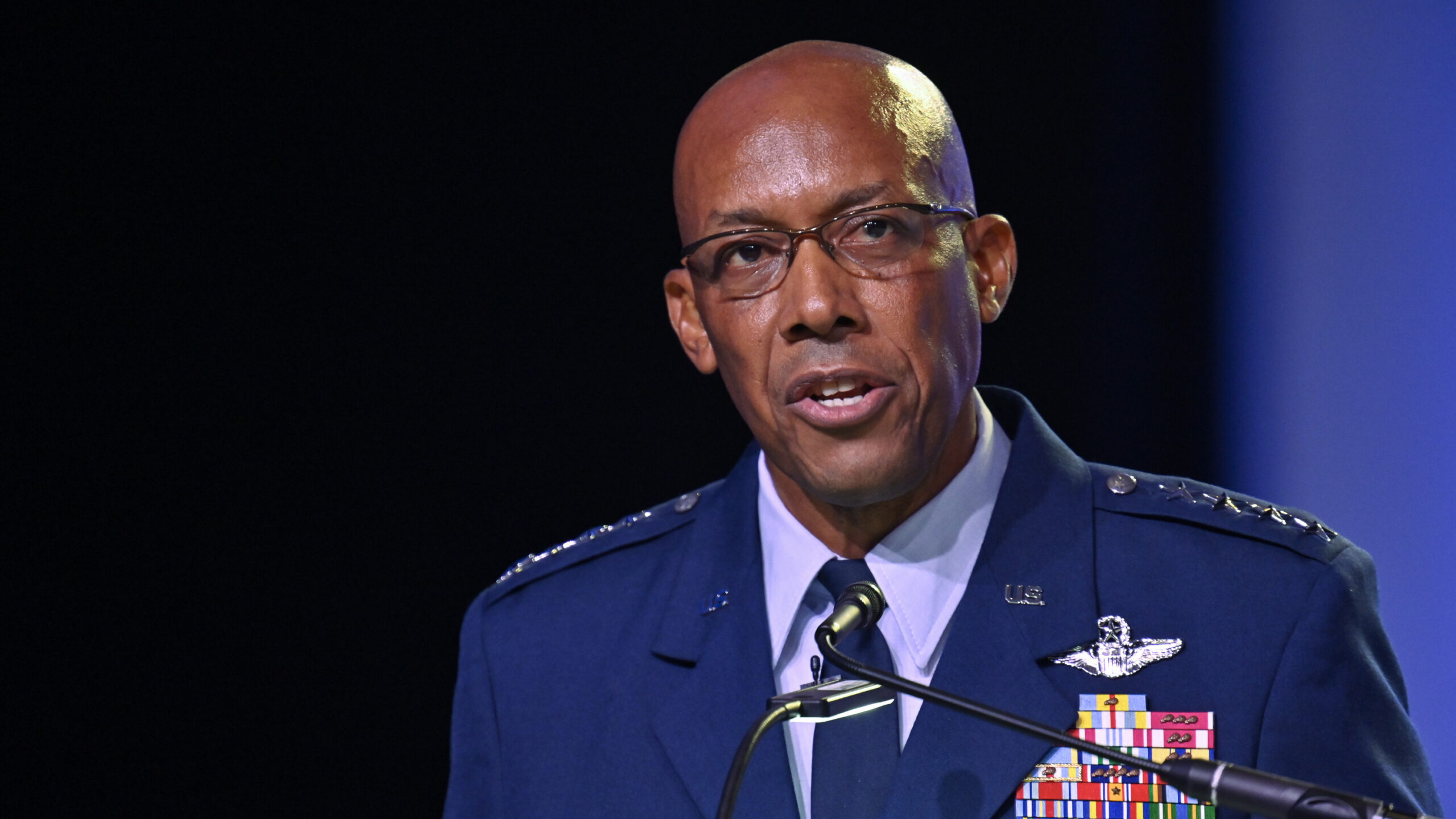
Air Force Chief of Staff Gen. CQ Brown, Jr. delivers his “Accelerate Change to Empowered Airmen” speech during the 2021 Air Force Association Air, Space and Cyber Conference in National Harbor, Md., Sept. 20, 2021. (US Air Force photo by Eric Dietrich)
WASHINGTON — President Joe Biden appears poised to select Air Force Chief of Staff Gen. CQ Brown to be the next Chairman of the Joint Chiefs of Staff.
Politico first reported the potential selection, citing sources on the Hill, and a source with knowledge of discussions confirmed to Breaking Defense that Brown appears to be the pick. However, until Biden signs the papers, things can always shift — as was the case when President Donald Trump picked Gen. Mark Milley to be chairman, despite then-Air Force Chief of Staff Gen. David Goldfein reportedly having the support of the sitting chairman and secretary of defense.
“When President Biden makes a final decision, he will inform the person selected and then announce it publicly. That hasn’t happened yet,” a spokesperson for the National Security Council said in response to an inquiry. The Air Force referred Breaking Defense to the NSC.
For the last year, Brown has been seen as the likeliest candidate to succeed Milley in the chairman’s role. While other names have been floated, including Marine Corps Commandant Gen. David Berger, Brown has always felt like the safest choice. Certainly, his selection will be cheered by advocates of the Air Force, who felt snubbed when Milley was selected instead of Goldfein despite the service not having held the chairmanship since 2005.
Brown joined the service out of ROTC in the mid-1980s and has served in a variety of posts ever since, including a stint as a fighter squadron commander and an F-16 instructor. Prior to his current role he was the commander of Pacific Air Forces.
Along with Air Force Secretary Frank Kendall, Brown has been leading the push to modernize the service and divest its aging weapon systems.
Shortly after coming on as the Air Force’s top uniformed officer, in August 2020, Brown unveiled his vision for the service in a short paper entitled “Accelerate Change or Lose” [PDF]. With peer adversaries like Russia and China quickly gaining ground, the Air Force has “a unique — but limited — window of opportunity to change,” Brown wrote. “If we fail to adapt to the changes in the strategic environment,” he warned, “a large and growing body of evidence suggests that we risk losing in great power competition, a high-end fight, quality Airmen, our credibility, and the ability to secure our future.”
When Brown was confirmed by the Senate for the Chief of Staff position in June 2020, observers said his ascension mirrored the Pentagon’s strategic shift to face China.
“He is a warfighter and a leader with deep knowledge and experience in the Indo-Pacific region — perfect choice for CSAF [Chief of Staff of the Air Force] at this critical time in our nation’s history,” Mark Gunzinger, an airpower expert at the Mitchell Institute, told Breaking Defense at the time.
In 2016 Brown highlighted the need for better integration between air power and the combatant commanders. Brown co-wrote an article in Air and Space Power Journal with then-Lt. Col. Rick Fournier in 2016 advocating for better integration of the Air Component into Combatant Command operations. In a forward to the article, the then-Lt. Gen. Brown said:
“Having served on a COCOM [combatant command] operations directorate staff twice, worked within three air components, and now as commander of an air component, I’ve had the opportunity to observe the interaction of the air component with its respective COCOM and sister components,” he wrote then. “As a result of my experiences, I strongly believe the time has come for a change in our thinking to take advantage of our recent doctrine updates and make adjustments to the air component organizational construct.”
Brown, the first Black man to lead a military service, offered a more personal side in a heartfelt video he uploaded in the wake of the death of George Floyd earlier that year. “I’m thinking about a history of racial issues and my own experiences that didn’t always sing of liberty and equality,” he said.
If selected and confirmed, Brown would become the second-ever Black chairman, and would join Defense Secretary Lloyd Austin as the first pair of Black men to hold the top spots at the Pentagon.
Michael Marrow in Washington contributed to this report.








